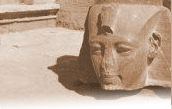 |
 |
A Guide to Citations & ReferencesWhen writing a research paper you are discussing ideas developed and published by other people in books and articles and you need to give them credit. Using other peoples' ideas without acknowledge them is plagiarism. You need to give credit when paraphrasing and when using direct quotes. Direct Quotes According to Hirth (1996:209), "production strategies are concerned with the control of surpluses generated in both food production and craft activity. Service models stress payments to elite individuals for the specific functions they provide for society. Distribution strategies focus on the direct and indirect control of resources moving through both mobilization and exchange networks." Authors name (year of publication: page number) Paraphrasing
As Moore (1985) pointed out, because the state is concerned with diverting resources from the household, we should be able to identify the hand of the state at the household level. |
Authors name (year of publication) If there are two authors list both: Mackey and Klymyshyn (1998), (Mackey and Klymyshyn 1998) If there are three authors: Smith et al. (2002), (Smith et al. 2002)
Different types of publications require different styles. Books with a single author:
Unpublished Ph.D. dissertation or Masters thesis:
|